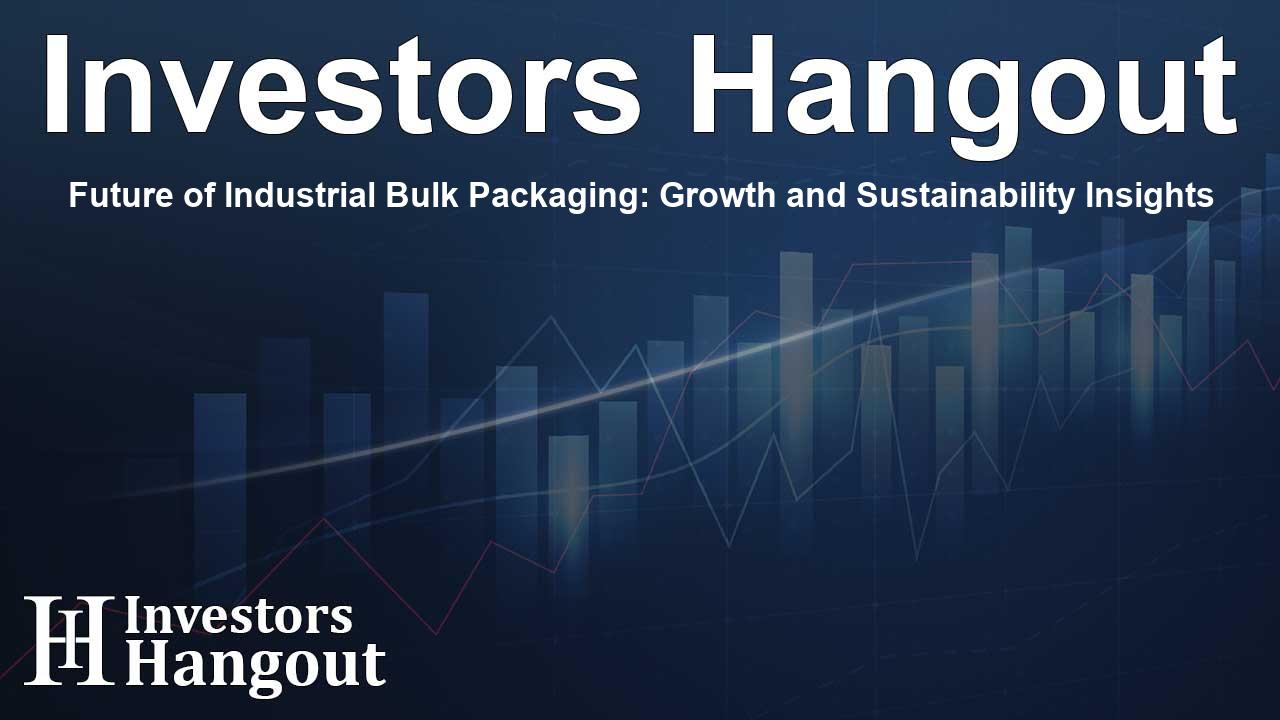Future of Industrial Bulk Packaging: Growth and Sustainability Insights

Future Growth of the Industrial Bulk Packaging Market
The global industrial bulk packaging market is on the verge of remarkable growth, moving from a projected valuation of USD 25.2 billion in the near future to an anticipated USD 35.7 billion by 2033. This growth underscores a compound annual growth rate (CAGR) of 3.9%. As businesses across various sectors, including chemicals, pharmaceuticals, and food, look for reliable packaging solutions, the relevance of bulk packaging becomes increasingly pivotal.
Market Overview and Importance
Packaging, particularly in bulk, is crucial for facilitating the movement and storage of materials. Containers such as drums, intermediate bulk containers (IBCs), and sacks are employed for safe handling and efficient transportation. These packaging solutions not only meet trade and environmental regulations but also respond to the increasing global demand, particularly in industries that prioritize sustainability.
Industrial Bulk Packaging in Key Sectors
Different sectors harness the benefits of bulk packaging. In the chemical and pharmaceutical industries, for example, safety regulations necessitate that proper certified packaging is utilized. The demand for eco-friendly packaging is compelling companies to seek out alternatives that are recyclable and biodegradable. Such transitions are driving forces behind innovations in bulk packaging materials.
Sustainable Practices in Packaging
As the market evolves, sustainability takes center stage, with increasing interest in biodegradable and reusable packaging materials. Many companies are investing in research and development to create lighter yet durable bulk packaging solutions, paving the way for reduced carbon footprints while still meeting consumer needs. The incorporation of automatic packaging processes also streamlines production lines, minimizing labor costs and maximizing efficiency.
Regional Insights and Trends
The Asia-Pacific region currently dominates the market, accounting for approximately 34.1% of the global bulk packaging market share. Countries like China and India are witnessing rapid industrialization, driving demand for effective packaging methods. Meanwhile, North America and Europe are focusing on eco-friendly alternatives as part of their sustainability goals, thus altering the landscape of competition for packaging solutions.
US Market Dynamics
Within the United States, the industrial bulk packaging market is poised for growth from USD 6.0 billion currently to an estimated USD 8.2 billion by 2033. This upswing is largely fuelled by a demand from sectors such as food, beverage, and pharmaceuticals. Innovations like smart packaging with IoT technologies enhance supply chain efficiencies while offering traceability, thereby minimizing product losses during transit.
Competitive Landscape
The market's competitive framework comprises various notable players, including Greif, Inc., Mauser Group, and Berry Global, each striving to innovate and expand their offerings. These companies are fervently investing in sustainable solutions, aligning with the growing demand for eco-friendly packaging options. Partnerships, mergers, and acquisitions are also pathways for firms to enhance their market presence.
Challenges and Opportunities Ahead
Despite advancements, the packaging industry faces challenges. The lingering environmental concerns associated with plastic packaging present a dilemma that the industry must address. To stay competitive, companies must ensure compliance with stringent packaging regulations while managing costs effectively. However, these obstacles create opportunities for innovation in material science and sustainable practices.
The Path Forward
The path ahead for the industrial bulk packaging market is paved with potential. As emerging markets like those in Asia-Pacific and Latin America continue to develop, the need for robust bulk packaging solutions will only intensify. Companies that embrace advancements in technology and sustainable practices are likely to thrive in this evolving landscape.
Frequently Asked Questions
1. What is the expected growth rate of the industrial bulk packaging market?
The industrial bulk packaging market is projected to grow at a CAGR of 3.9%, reaching USD 35.7 billion by 2033.
2. Which regions are leading in the industrial bulk packaging market?
Asia-Pacific is currently leading the market, holding approximately 34.1% of the global market share.
3. What are the primary drivers for the demand in this market?
Key drivers include increased industrialization, the need for efficient transportation, and a shift toward sustainable packaging solutions.
4. Who are the major players in the industrial bulk packaging industry?
Major players include Greif, Inc., Mauser Packaging Solutions, and Berry Global, Inc., among others.
5. How does smart packaging impact the market?
Smart packaging technologies enhance tracking and monitoring capabilities, improving supply chain efficiency and reducing product waste.
About Investors Hangout
Investors Hangout is a leading online stock forum for financial discussion and learning, offering a wide range of free tools and resources. It draws in traders of all levels, who exchange market knowledge, investigate trading tactics, and keep an eye on industry developments in real time. Featuring financial articles, stock message boards, quotes, charts, company profiles, and live news updates. Through cooperative learning and a wealth of informational resources, it helps users from novices creating their first portfolios to experts honing their techniques. Join Investors Hangout today: https://investorshangout.com/
Disclaimer: The content of this article is solely for general informational purposes only; it does not represent legal, financial, or investment advice. Investors Hangout does not offer financial advice; the author is not a licensed financial advisor. Consult a qualified advisor before making any financial or investment decisions based on this article. The author's interpretation of publicly available data shapes the opinions presented here; as a result, they should not be taken as advice to purchase, sell, or hold any securities mentioned or any other investments. The author does not guarantee the accuracy, completeness, or timeliness of any material, providing it "as is." Information and market conditions may change; past performance is not indicative of future outcomes. If any of the material offered here is inaccurate, please contact us for corrections.